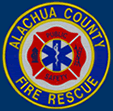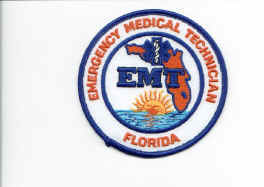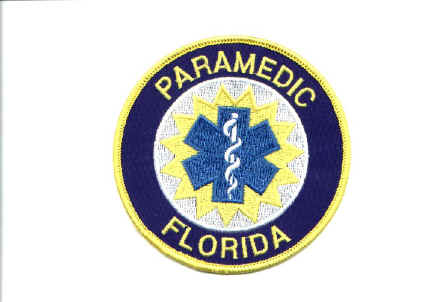
Ben's Emergency Medical
Services Dedication Page
Prehospital Provider Overview




Scroll down for a description of the various prehospital providers
EMS Links
I worked as a
Paramedic/Attendant/Firefighter for Alachua County Fire Rescue from 1998-2001.
Prior to full time employment, I volunteered as an officer with the ACFR Reserve
Division for several years. I obtained EMT certification from Broward Community
College in 1994 and the paramedic certificate in 1997. A big thank you to Joe
Jones, EMT-P, for believing that paramedics are more than monkeys.
Without further delay, welcome to the EMS Provider overview:
I. The EMT:
This prehospital professional undergoes a minimum of about
200 hours training. The EMT, or emergency medical technician, is an entry level
provider that is responsible for basic life support. Often assigned to ALS
ambulances as crewmembers and driver/operators, the EMT can administer oxygen
and provide automated external defibrillation. The state of Florida only
recognizes the, "EMT-B," or basic level of training. Most firefighters
are trained to at least the EMT level.
II. The EMT-Intermediate
Different states recognize a variety of EMT training
programs. In some states, there are not enough paramedics to staff ambulances.
Funding for paramedic level services may not exist, and intermediate level
providers fill needed gaps in emergency medical care. An EMT-Intermediate
typically receives additional training in IV therapy and certain emergency
medications. EMT intermediates can also recognize cardiac dysrhythmias and
provide electrical therapy. Some states recognize a, "cardiac" level
of EMT provider that is authorized via protocol to administer anti-arrhythmic
drugs.
III. The EMT-Paramedic or
EMT-P
The EMT-paramedic functions as the medical,
"leader" of a prehospital team. Many firefighters are trained to
provide paramedic services. To be credentialed as an, "Advanced Life
Support" provider, ambulances and fire rescue/EMS agencies must have
paramedic providers on staff. Alachua County Fire Rescue, for example, operated
ALS Engines and ALS Rescue Units. Each fire truck and ambulance, therefore, had
at least one paramedic aboard. The, "paramedic/attendant" was charged
with the supervision of patient care and necessary documentation. Paramedics
receive at least 1200 hours of training in advanced life support, physiology,
trauma care, pharmacology, and rescue airway techniques. Paramedic providers
perform invasive procedures necessary to treat life threatening illness or
injury. In many community colleges, an associate's degree is required for
paramedic certification. Paramedics then sit for a state or national examination
and are certified for a period of two to three years.
IV. Specialized
EMT-Paramedics
Paramedics can pursue additional training in prehospital care
and transportation. Flight paramedics complete the AMCC or air medical crew core
curriculum prior to assignment of flight duties. The University of Maryland
offers a Critical Care Paramedic certification course designed to familiarize
the paramedic with the drug drips and infusions commonly utilized in the
intensive care setting. Paramedics assigned to pediatric transport teams
typically complete training in neonatal resuscitation and advanced pediatric
life support. The Critical Care Paramedic, or CCEMT-P course, lasts for
approximately two weeks and is adapted from the CCRN curriculum. This course is
highly recommended for prehospital providers seeking employment with hospitals
or specialized interfacility units.
V. Other
Prehospital Providers and Professionals
Medical directors supervise the operation of an
emergency medical service. These physicians provide medical quality assurance,
protocol review, and leadership to field paramedics. Generally speaking, medical
directors must be licensed as an osteopathic (DO) or allopathic (MD) physician
with experience and/or residency training in emergency medicine. Indeed,
fellowships are available for emergency medicine physicians who desire
additional training and familiarity with the chaotic and challenging realm of
prehospital care.
First responders are individuals who have completed an
approximately fifty hour course in advanced first aid techniques. Though often
not regulated by individual states, these providers are often found in small or
volunteer departments. A national registry of first responders is maintained by
the NREMT. Regulations vary between the states, but certification by the
national registry is not required. Typically, first responder students complete
a department of transportation course sponsored by the National Safety Council,
American Red Cross, other other EMS training agency.
Mobile Intensive Care Nurses are registered nurses who
complete additional training in prehospital advanced life support. Some states
mandate a specialized course in advanced airway and cardiac resuscitation
techniques. These nurses can be trained to provide assistance with on-line
medical control or actually ride along with EMT's and paramedics and provide
advanced life support in a field setting.